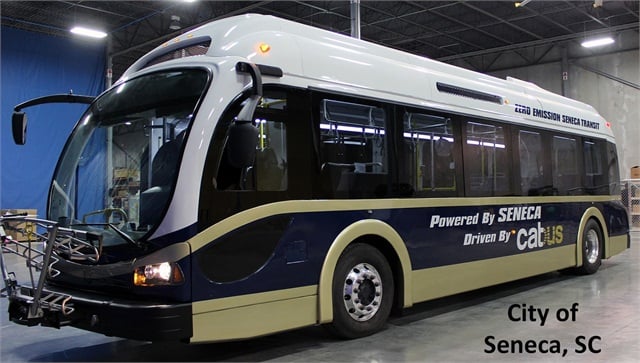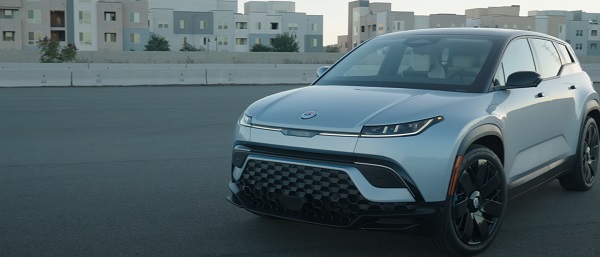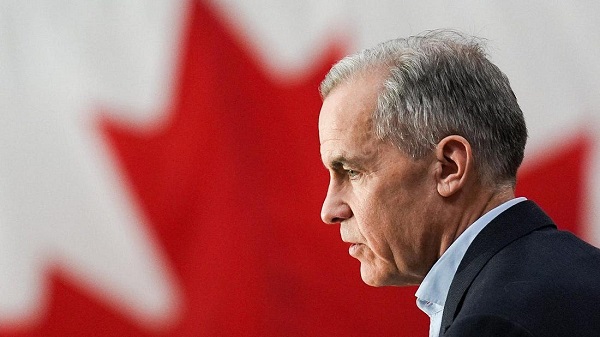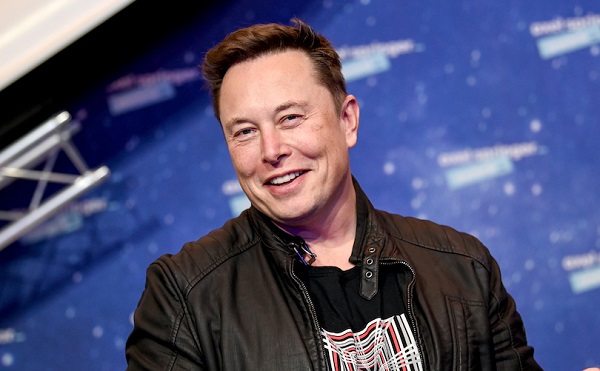Automotive
World’s first all-electric bus fleet shut down due to breakdowns and expense

From Heartland Daily News
Electric Buses Not a Panacea
Last week, the city of Seneca, South Carolina decided to shut down the Clemson Area Transit System, which served Seneca and nearby Clemson University. Once touted as owning the world’s first all-electric bus fleet, just a few years later two thirds of its expensive electric buses had broken down, the company that made them went bankrupt, parts were no longer available, and the city can’t afford to buy replacement buses.
Seneca is not exactly a major metropolis. But Clemson Area Transit isn’t the only transit agency to have trouble with electric buses. Just the day before Seneca decided to shut down its transit system, Austin’s Capital Metro announced that it was giving up on its plan to electrify its bus fleet by 2030. Electric bus technology, said the agency, simply hasn’t progressed far enough to replace Diesels.
California’s Foothill Transit, one of the first agencies to use rapid-charge electric buses in 2010, has also had problems. Like Austin, the agency had hoped to completely electrify by 2030. Instead, by 2020 most of the electric buses in its fleet were out of service. In 2021, the agency decided to return the buses even though doing so would require it to pay a $5 million penalty to the Federal Transit Administration, whose grant initially paid most of the cost.
The Southeast Pennsylvania Transportation Authority (SEPTA) may be the largest agency to have practically given up on electric buses. It pulled its 25-bus electric fleet out of service in 2021 when the buses were just five years old. The buses had suffered cracks in their chassis, but it appears that problem was only the straw that broke the omnibus’s back. “We do not feel the current [electric bus] technology is a good investment at this time,” concluded SEPTA’s general manager.
Transit agencies in Asheville, Colorado Springs, and several other cities have reported similar problems. Albuquerque completely gave up on its electric buses and returned them to the manufacturer, a Chinese company called BYD.
Electric buses cost 50 to 100 percent more than their Diesel counterparts. A 2019 study by US PIRG predicted that such buses would nevertheless save transit agencies $400,000 apiece over their lifetimes due to lower fuel and maintenance costs. US PIRG relied on four “success stories” to justify this conclusion. Success story number one was Seneca, South Carolina.
The report acknowledged Albuquerque’s problems but blamed them on the city’s hills and high temperatures. Compared with Austin, Albuquerque is practically flat and its temperatures are nowhere near as extreme. If electric buses can’t work in Albuquerque, they aren’t going to work in a lot of other cities.
Other than Albuquerque, one thing many of these failures have in common is electric buses manufactured by Proterra, one of four major electric bus manufacturers that have recently sold buses in the U.S. and the only one to actually be a U.S. company. In 2023, it claimed that COVID-related supply-chain problems had driven it into bankruptcy. The company’s three divisions — transit buses, batteries and drive trains, and charging systems — were sold to three other companies to pay Proterra’s debts and none of the buyers are supporting Proterra’s buses or even making similar buses. In view of the many problems transit agencies were having with its buses before 2023, it seems likely the supply-chain explanation was just a dodge for Proterra’s shoddy design and workmanship.
One reason for that may simply be opportunism on the part of bus manufacturers, including both Proterra and BYD. Before passage of the 2021 infrastructure bill, the federal government was paying 80 percent of the cost of Diesel buses but 90 percent of the cost of electric buses purchased by transit agencies. For a transit agency, that meant that an electric bus could cost twice as much as a Diesel bus without costing local taxpayers an extra dime. Bus manufacturers thus felt free to increase their profits by raising the price of their electric buses and, having done so, may have compounded the problem by cutting costs.
Beyond manufacturing defects, electric buses have several generic problems. First, while a Diesel bus can operate all day, an electric bus can operate only a few hours on a single time-consuming charge. Proterra claimed to have solved this problem with a rapid-charge system, but that didn’t prevent Foothill Transit from suffering enormous problems with its electric buses. This probably is particularly serious on long bus routes: Austin’s Capital Metro estimates that today’s electric buses could satisfactorily serve only 36 percent of its routes.
Second, the batteries needed to power electric bus motors are heavy, which is probably why SEPTA’s buses suffered cracks in their chassis. Supposedly, the frames on SEPTA’s Proterra buses were made of “resin, fiberglass, carbon fiber, balsa wood, and steel reinforcement plates,” which almost sounds like a joke. But making frames strong enough to support the batteries means adding even more weight to the buses, which shortens their range and adds to wear and tear on other parts of the buses.
Third, electric buses are not necessarily climate-friendly enough to justify their added cost. In Washington state, where most electric power comes from hydroelectric dams, switching from Diesel to electric buses will definitely reduce greenhouse gas emissions. But most other states, including New Mexico, South Carolina, and Texas, get most of their electricity from fossil fuels and thus electric buses may not reduce greenhouse gas emissions at all when compared with Diesels.
Under the 2021 infrastructure law, the federal government is handing out close to a billion dollars to buy electric buses. Advocacy groups such as US PIRG want transit agencies to “commit to a full transition to electric buses on a specific timeline.” Such funding and commitment may be premature, however, if electric bus technology is not capable of equalling Diesel buses, will cost agencies more in the long run, and won’t do much to reduce greenhouse gas emissions.
The Antiplanner is a forester and economist with more than fifty years of experience critiquing government land-use and transportation plans.
Originally published by The Antiplanner. Republished with permission.
Automotive
Big Auto Wants Your Data. Trump and Congress Aren’t Having It.


From the Daily Caller News Foundation
Congress is not going to allow Big Auto to sideline consumer privacy and safety while getting subsidized massively by the federal government.
That is because, in late September, by an overwhelming vote of 50 to 1, Chairman Brett Guthrie’s (R-KY) House Energy & Commerce Committee joined the Senate Commerce, Science, and Transportation Committee in passing the AM Radio for Every Vehicle Act.
This legislation is in response to some automakers removing AM radios from new model vehicles despite pleas from America’s public safety community not to do so.
Dear Readers:
As a nonprofit, we are dependent on the generosity of our readers.
Please consider making a small donation of any amount here.
Thank you!
“They’d rather force consumers to use their infotainment devices — which collect and sell their third-party data — than protect American lives,” Corey Lewandowski, President Trump’s 2016 campaign manager and senior adviser to his 2020 and 2024 campaigns, stated.
The entirety of America’s public safety community spanning the federal, state, and local levels, insists AM radio remaining in cars is critical for protecting the nation’s emergency alerting systems. These systems rely heavily upon AM radio, the only communication method that has stayed reliably accessible during many disasters such as the Sept.11 terrorist attack and major disasters like Hurricanes Katrina, Sandy, and most recently, Helene.
Brendan Carr, the current chairman of President Trump’s FCC, nominated by President Trump, has also endorsed the AM Radio for Every Vehicle Act. In a statement, Carr said that “millions of Americans depend on the value of AM radio and the local news that AM broadcasters offer in communities across the country.” He also recounted hearing firsthand stories of Hurricane Helene victims who “could only access lifesaving information in the days following the storm by tuning into their AM radios.”
AM radio also serves another purpose that the elites in Silicon Valley and Detroit often forget: it keeps rural and working-class America connected. Millions of people outside the big cities rely on AM for local news, farm reports, weather alerts, and even community events. For many small towns, AM stations are a lifeline—far more reliable than expensive streaming services or spotty cell coverage. Pulling it out of cars is yet another way of telling Middle America: “you don’t matter.”
Of course, no good idea in Washington is safe from special interests.
Despite the broad support within Congress, the administration, and throughout the public safety and first responder communities, the bill has faced a full-court press by the musicFIRST Coalition — a group backed by the Recording Industry of America — to tank the legislation unless it is tied to unrelated music royalty reform legislation. That’s cronyism politics at its worst—holding public safety hostage to squeeze out another payday.
However, now that the AM Radio for Every Vehicle Act has passed both committees by overwhelming margins, the only stop left for the legislation is the House and Senate Floor — meaning Speaker Mike Johnson (R-LA) and House Majority Leader John Thune (R-SD) must call it up for a roll call vote.
At the heart of this fight is more than just whether a radio dial stays in your dashboard. It’s about whether Americans can trust that their safety won’t be sacrificed for corporate profit.
It’s also about data privacy. Automakers and Big Tech are eager to funnel drivers into infotainment systems that monitor every move, harvest personal information, and sell it to the highest bidder. AM radio doesn’t spy on you. It doesn’t crash when the grid goes down. It doesn’t put profit ahead of people. It just works.
For the sake of both public safety and personal freedom, Congress should make sure it stays that way.
Ken Blackwell (@KenBlackwell) is an adviser to the Family Research Council and a chair at the America First Policy Institute. He is a former Mayor of Cincinnati, Ohio, Ohio Treasurer and Secretary of State, and U.S. Ambassador to the United Nations Human Rights Commission. He is also a former member of the Trump transition team.
Automotive
Canada’s EV subsidies are wracking up billions in losses for taxpayers, and not just in the auto industry

By Dan McTeague
To anyone who thought that the Liberals’ decision to postpone enforcement of their Electric Vehicle (EV) mandate by one year was part of a well-thought-out plan to get that disastrous program back on track, well, every day brings with it news that you were wrong. In fact, the whole project seems to be coming apart at the seams.
Here’s the latest crisis Mark Carney and his carnival of ideologues are having to deal with. Late last year, the Liberal party instituted a 100% tariff on Chinese-made EVs. The idea was to protect the Canadian EV industry from China dumping their vehicles into our country, at prices far lower than Canadian companies can afford due to their massive state subsidies. This has been a major problem in the EU, which is also attempting to force a transition to EVs.
But Beijing wasn’t going to take that lying down. Taking advantage of Western environmentalist sentiment is an important part of their economic plans — see, for instance, how they’ve cornered the global solar panel market, though the factories making them are powered by massive amounts of coal. So they retaliated with a 75% duty on Canadian canola seed and a 100% tariff on canola oil and canola meal.
This was big enough to really hurt Canadian farmers, and Ottawa was forced to respond with more than $300 million in new relief programs for canola producers. Even so, our farmers have warned that short-term relief from the government will do little if the tariffs are here for the long-term.
With pressure on Carney mounting, his Industry Minister Melanie Joly announced that the government was “looking at” dropping tariffs on Chinese EVs in the hope that China would ease off on their canola tariffs.
That may be good news for canola producers, but how about the automotive companies? They’ve grown increasingly unhappy with the EV mandate, as Canadian consumers have been slow to embrace them, and they’ve been confronted with the prospect of paying significant fines unless they raise prices on the gas-and-diesel driven vehicles which consumers actually want to make the EVs that they don’t really want more attractive.
That’s the context for Brian Kingston, CEO of the Canadian Vehicle Manufacturers’ Association, saying that dropping these tariffs “would be a disaster.”
“China has engaged in state-supported industrial policy to create massive overcapacity in EV production, and that plan is coming to fruition now,” Kingston said. “When you combine that with weak labour and environmental standards, Chinese manufacturers are not competing with Canadian, American, or Mexican manufacturers on a level playing field. We simply cannot allow those vehicles to be dumped into the Canadian market.”
The auto manufacturers Kingston represents are understandably upset about suddenly having to compete with underpriced Chinese EVs. After all, with the government forcing everyone to buy a product they really don’t want, are most people going to patriotically pay more for that product, or will they just grab whichever one is cheaper? I know which one I think is more likely.
And then there’s a related problem — the federal and provincial governments have “invested” somewhere in the neighborhood of $52.5 billion to make Canada a cog in the global EV supply chain. In response to Joly’s announcement, Ontario Premier Doug Ford, who has gone “all in” on EVs, wrote an open letter to the prime minister saying that canceling the tariffs would mean losing out on that “investment,” and put 157,000 Canadian automotive jobs at risk.
Now, it’s worth noting that automakers all over Ontario have already been cutting jobs while scaling back their EV pledges. So even with the tariffs, this “investment” hasn’t been paying out particularly well. Keeping them in place just to save Doug Ford’s bacon seems like the worst of all options.
But it seems to me that the key to untangling this whole mess has been the option I’ve been advocating from the beginning: repeal the EV mandate. That makes Canada less of a mark for China. It benefits the taxpayers by not incentivizing our provincial and federal governments to throw good money after bad, attempting to subsidize companies to protect a shrinking number of EV manufacturing jobs.
The heart of this trade war is an entirely artificial demand for EVs. Removing the mandate from the equation would lower the stakes.
In the end, the best policy is to trust Canadians to make their own decisions. Let the market decide.
Support Dan’s Work to Keep Canadian Energy Affordable!
Canadians for Affordable Energy is run by Dan McTeague, former MP and founder of Gas Wizard. We stand up and fight for more affordable energy.
-

 National17 hours ago
National17 hours agoCanada’s birth rate plummets to an all-time low
-

 Agriculture1 day ago
Agriculture1 day agoCarney’s nation-building plan forgets food
-

 Fraser Institute1 day ago
Fraser Institute1 day agoAboriginal rights now more constitutionally powerful than any Charter right
-

 Business18 hours ago
Business18 hours agoElon Musk announces ‘Grokipedia’ project after Tucker Carlson highlights Wikipedia bias
-

 Alberta1 day ago
Alberta1 day agoAlberta puts pressure on the federal government’s euthanasia regime
-

 Crime16 hours ago
Crime16 hours agoPierre Poilievre says Christians may be ‘number one’ target of hate violence in Canada
-

 Red Deer18 hours ago
Red Deer18 hours agoThe City or Red Deer Financial Troubles: The Role of Good Governance, Effective Policies and Key Performance Metrics.
-

 Business2 days ago
Business2 days agoDemocracy Watch Drops a Bomb on Parliament Hill




